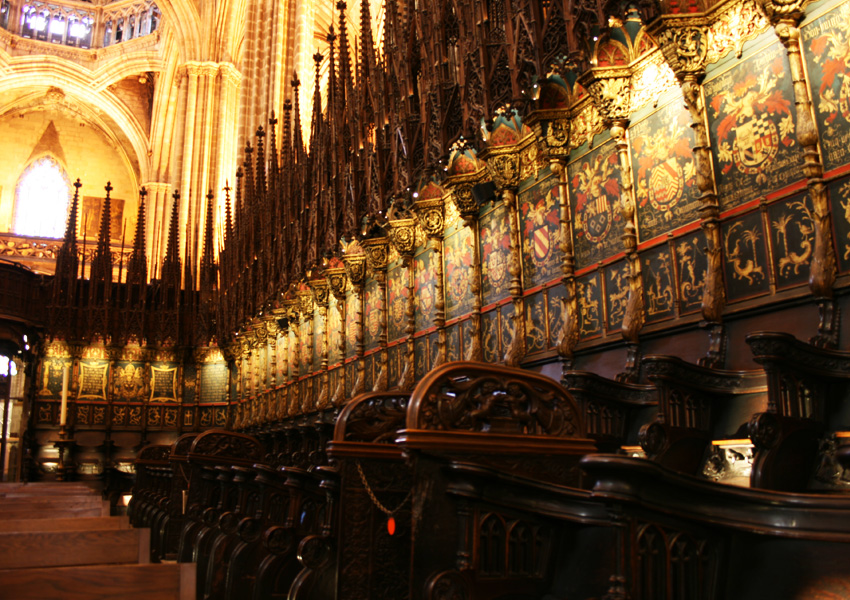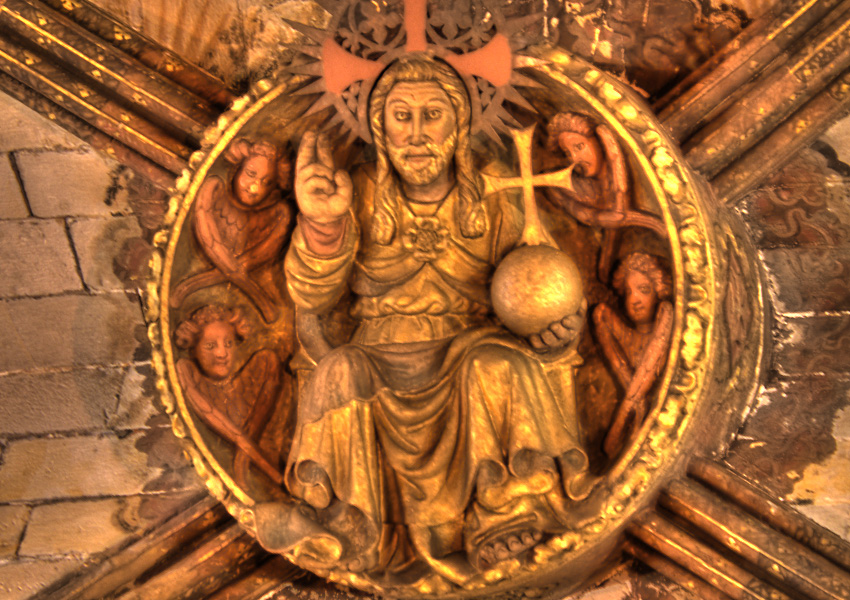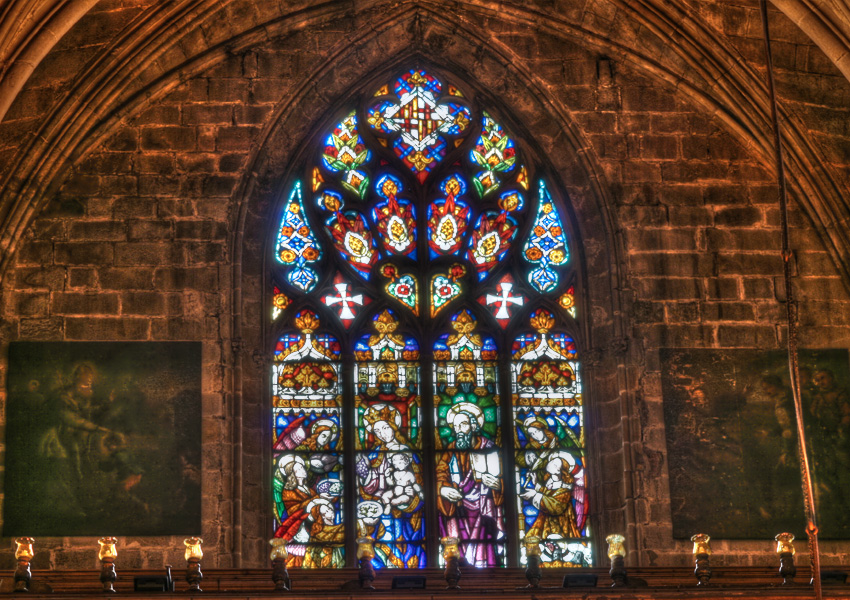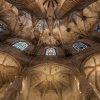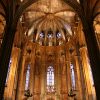The Cathedral of Barcelona is comprised of three naves, but just a single apse and ambulatory. The naves have five sections: that closest to the façade is the longest in order to accommodate the dimensions of the cimborio, which is adjacent to the main entrance.
The typical structure used in Catalan Gothic constructions, arranged to permit use of the spaces within the buttresses, allowed rows of secondary chapels to be opened up in the Cathedral. There are two chapels in each section of the naves, encircling the entire basilica.
Two large bell towers are located at the ends of the section nearest to the presbytery, with no side chapels. One of the towers is over the door of Saint lvo and the other is over the interior entryway to the Cloister. On the basilica’s terraces, these towers are octagonal with a prismatic body used for the stairways, which are built into the towers (1386-1393 and 16th century).
Large windows open up onto the radial chapels of the ambulatory, illuminating the presbytery. In the lateral naves, a tall, windowed gallery runs above the chapels on the outer wall of the basilica. A small triforium runs around the central nave and the presbytery near the dome.
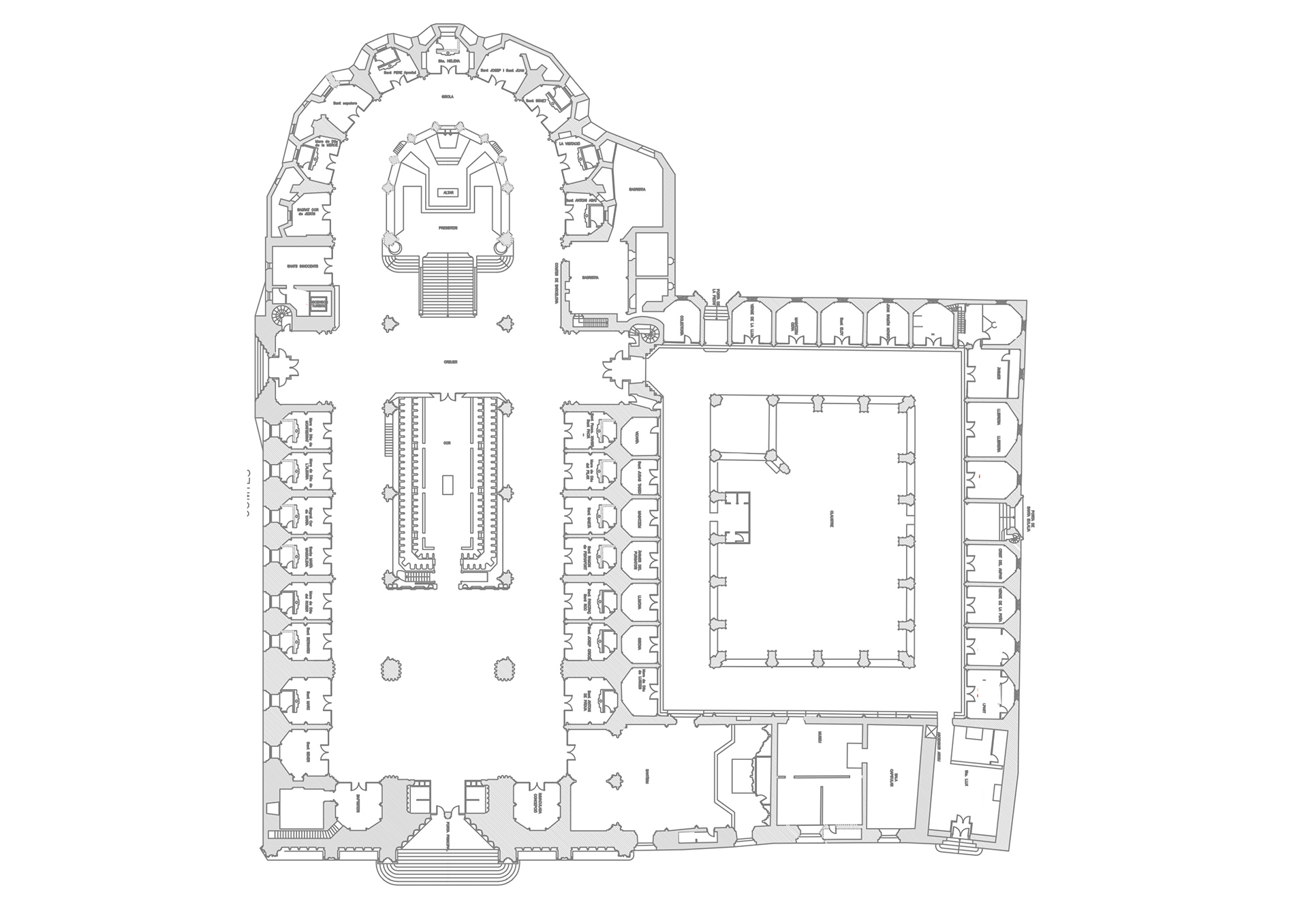
Dimensions
The external measurements of the Cathedral are 93 meters long, 40 meters wide and 28 meters high at the central nave. The bell towers reach a height of 54 meters. The cimborio measures 70 meters on the outside and 41 meters on the inside.
On the interior, not including the chapels on each side, the Cathedral is 79 meters long and 25 meters wide. Each chapel is 9 meters high, 5 meters wide and 6 meters deep. The central nave is 13 meters wide and 26 meters high. The lateral naves are 6 meters wide and 21 meters high, while the pillars measure 15 meters from their bases to the beginning of the arches.

Paintings
The Cathedral’s chapels hold Gothic altarpieces painted by Guerau Gener, Lluís Borrassà, Gabriel Alemany and Bernat Martorell, among others.
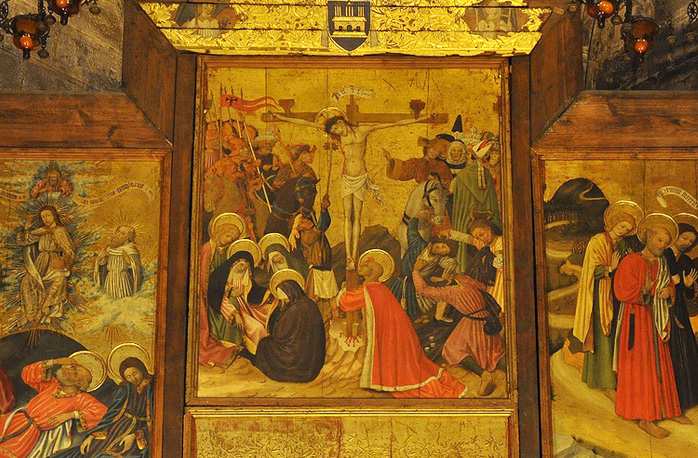
The Cathedral Museum houses Gothic paintings by artists such as Pere Destorrents, Jaume Huguet and Bartolomé Bermejo, creator of The Pieta.

Decorative Arts
The monstrance
The monstrance is one of the Cathedral’s treasures. Made of gold and silver, it is adorned with jewels donated out of deep-seated popular devotion. The throne of King Martin, made of gilded silver, has served as a base for the monstrance since the mid-15th century. The throne dates from the 14th century and was allegedly left to the Church or donated by King Martin the Humane.
Choir stalls
The stalls of the Cathedral’s choir date from the 14th and 15th centuries. The seat backs show the coats of arms of the Order of the Golden Fleece from the 16th century.
Also of interest in the choir is the pulpit, created by Pere Çanglada and Matíes Bonafé in collaboration with Anthony Claperós and John Lambert, between 1394 and 1499. The tall, pinnacle-shaped canopies from 1499 were designed by the artists Kassel and Michael Lochner.
The retrochoir is closed off by a marble wall with reliefs from the 16th century, created by Bartolomé Ordóñez and Pedro Villar.
Keystones
The Cathedral has a total of 215 keystones, dating from the 14th and 15th centuries.
They were restored in 1970, when it was discovered that they were polychromed.
The keystones in the central nave, starting at the presbytery, depict:
- Christ crucified between the Virgin and Saint John, with the symbols of the sun and the moon.
- Saint Eulalia with the coat of arms of Blanca of Naples, wife of James II. 1320.
- Our Lady of Mercy using her cape to shelter a pope, a king, a cardinal, a bishop and a canon on one side, and a queen, a nun and three other feminine figure on the other side. 1379.
- The Annunciation: The Virgin with the Archangel Saint Gabriel. 1379.
- A bishop with deacons. Believed to be Bishop Pere Planella (1371-1385), as his coat of arms is on the side of the keystone.
- The Eternal Father surrounded by angels, by the sculptor Pere Joan. 1418.
Another large keystone is that located in the crypt of Saint Eulalia, representing the Saint with the Virgin and Child. Near the door of Saint Ivo, the keystone shows Saint Peter and is surrounded by four other smaller trefoil keystones. At the exit door from the Cloister, on the opposite side, is a representation of Saint John with the eagle.
Stained-glass windows
The Cathedral has many Gothic and modern stained-glass windows. They are all three-paneled, with the central panel depicting the image of the central character and the side panels with geometric decorations framing coats of arms of royal families and of the city, angels, etc. and crowned by a trefoil decoration.
The stained-glass windows can be divided into four different periods:
The earliest date from 1317-1334, as indicated by the coat of arms of Bishop Ponç de Gualba figuring on the window of the Holy Cross and Saint Eulalia. This period encompasses all the stained-glass windows of the chevet, above the radial chapels. Also from this period are the windows dedicated to Pope Saint Sylvester – with side panels by the Master of Saint Sylvester (1386) showing the heads of sainted bishops – and those depicting Saint Peter and Saint Stephen.
From the second period, around the year 1400, are the windows at the far ends of the apse: Saint Andrew with the coats of arms of Bishop Armengol (1398/1408) and Saint Anthony Abat, created by Nicolás de Maraya (1405-1407).
The third period comprises the stained-glass windows from the 15th century, such as that representing Saint Michael archangel and Noli me tangere, the most important of all the Cathedral windows, located in the baptistery chapel and made by Gil de Fontanet from cartoons drawn by Bartolomé Bermejo in 1495.
The fourth period runs from the late 19th to the late 20th centuries and includes the stained-glass windows on the façade and the side walls.



